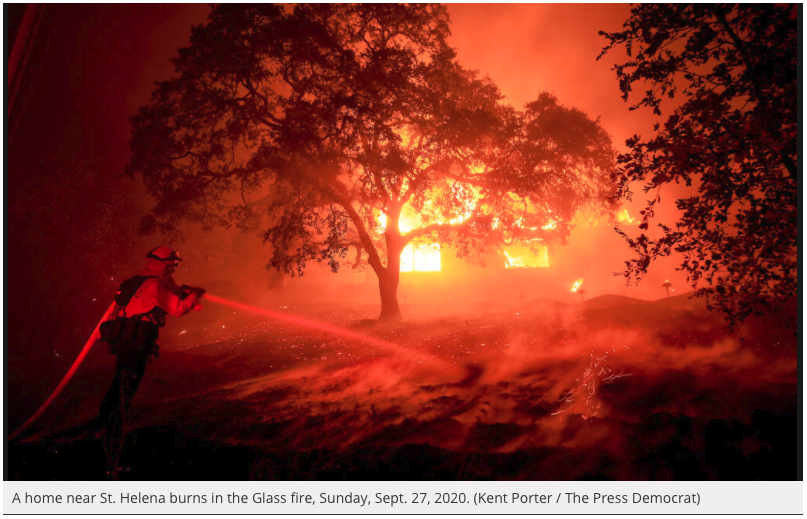
DALE KASLERSACRAMENTO BEEDecember 8, 2020
Thousands of rural Californians have lost homeowners’ insurance in recent years because of rising wildfire claims, forcing them to seek alternative coverage that’s two or three times more expensive.
Now their rates are about to go even higher.
The California FAIR Plan, the state’s “insurer of last resort,” will increase rates Jan. 1 to cover heavy losses incurred this year — the most destructive wildfire season in the state’s history, as measured by acres burned.
Anneliese Jivan, the insurer’s president, told The Sacramento Bee on Monday that rates will increase an average of 15.6% statewide.
But the burden will fall hardest on rural homeowners. Urban homeowners on the FAIR Plan will see little-to-no increase while Californians in the wildfire-prone areas will see increases considerably higher than the 15.6% average.
It follows a 20% average increase about 18 months ago and reflects the ongoing crisis in wildfire country as risks increase and mainstream insurance companies withdraw coverage.
Jivan said the FAIR Plan incurred wildfire claims totaling $350 million since Sept. 1, when the worst of the fire season kicked in. That’s a considerable sum for a company that took only $400 million in total premium revenue — and has to pay claims for other disasters besides wildfires. About half of the FAIR Plan’s 211,000 policyholders live in urban areas that have little or no risk of wildfire.
“We’re way underwater for the year, which is exactly what’s driving our rate need,” she said.
FAIR plan adding tens of thousands to coverage
Insurance Commissioner Ricardo Lara has imposed moratoriums the past two years prohibiting mainstream carriers from canceling coverage in areas that burned, a move that’s enabled hundreds of thousands of homeowners to hang onto relatively affordable policies.
But the moratoriums only last one year and the underlying problem continues to worsen as climate change increases the risk of major wildfires. Traditional carriers dropped 42,000 homeowners in the Sierra foothills last year, nearly twice as many as the year before, the Department of Insurance says. Figures for this year haven’t yet been released.
A homeowner who gets dropped by a traditional carrier usually winds up on the FAIR Plan, which was created by the Legislature in the 1960s to help inner-city property owners who were losing coverage because of urban unrest. The FAIR Plan has added 70,000 homeowners in the past two years, almost all of them in wildfire-prone areas.
Although it’s a creature of the Legislature, the plan doesn’t receive taxpayer subsidies.
Lara has begun working with mainstream insurers on developing standards for “home hardening” and other strategies to reduce wildfire risks, in the hopes that many of them will resume covering rural Californians. A McClatchy analysis of data from the 2018 Camp Fire, which destroyed much of the town of Paradise, showed that homes built to higher standards were more likely to survive the fire.
But help for rural areas desperate for insurance answers appears to be a ways off. Earlier this year Gov. Gavin Newsom proposed spending $100 million to help homeowners retrofit their homes against fire but pulled the money off the table after the COVID-19 pandemic blew a $54 billion hole in the state budget.
